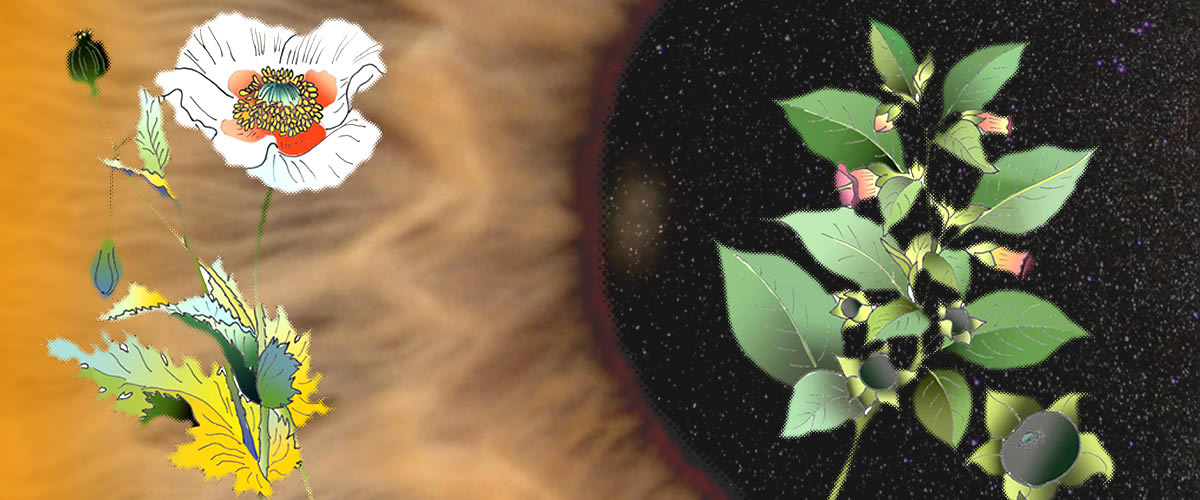The pupil’s response to light and environment is a reliable indicator of nervous system activity.
The pupil’s dilation, being regulated by the involuntary innervation of organs (the autonomic nervous system), gives trustworthy data in this regard.
The autonomic nervous system is composed of two major sections in constant balance with each other: the sympathetic nervous system and the parasympathetic nervous system.
The sympathetic nervous system is considered as the stimulator of organs’ activity while the parasympathetic nervous system is considered its modulator and restrain.
Such rough distinction is a consequence of the effects that the sympathetic neurotransmitter (noradrenaline) and parasympathetic one (acetylcholine) have on the heart, the bloodstream and on the central nervous system.
Heart and circulatory system. Noradrenaline is a stimulator of the heart and bloodstream: it enhances heart rate, heart contraction and arterial pressure. Acetylcholine, on the other hand, decreases heart rate, heart contraction and arterial pressure.
Nervous system. Noradrenaline stimulates attention while acetylcholine integrates regulatory centers.
A dilated or contracted pupil is an important source of knowledge. In current language, very reactive, agile and quick people are defined adrenaline-driven while quiet, moderate and restrained people are defined self-controlled.
The pupil’s dilation shows a prevalence of the sympathetic nervous system, whereas the pupil’s constriction shows a prevalence of the parasympathetic nervous system. Therefore, pupil’s dilation will tell us whether the person is more or less adrenaline-driven or self-controlled.
Not all responses to the neurovegetative nervous system are as simple as those of the pupil and the heart.
Frequently responses to noradrenaline and acetylcholine aren’t stimulating or modulating but functional to the organ.
It is therefore important to know the main effects of the two sectors of the neurovegetative system on the organs. This will help understand or foresee individual predispositions.
Organic damage and functional disorder. Many disorders are caused by an imbalance of the autonomic nervous system. These are called functional disorders. Such definition indicates function’s impairment in the absence of organic damages.
In current practice the problem of distinguishing between organic damages and functional disorders is usual.
Autonomic nervous system and organs functions. All organs’ functions are regulated by the autonomic nervous system, not only those of the pupil or of the heart.
Lungs: the sympathetic system increases bronchial dilation and reduction of secretions; the parasympathetic provokes bronchial constriction and increase of secretions.
Oral cavity: sympathetic, inhibition of salivation, mucus salivation; parasympathetic, increase of salivation, watery salivation.
Stomach: sympathetic, predisposition to gastritis and ulcer; parasympathetic, predisposition to spasmophylia.
Digestive tract: sympathetic, decrease in motility, secretions inhibition, visceral contraction; parasympathetic, increase in motility, secretions increase, visceral relaxations.
Liver: sympathetic, release of glucose, hyperglycemia; parasympathetic, storage of glucose and glycogen.
Gallbladder: sympathetic, relaxation; parasympathetic, contraction.
Pancreas: sympathetic, inhibition; parasympathetic, stimulation of digestive enzymes and insulin release.
Urinary bladder: sympathetic, urinary bladder muscles relaxation; parasympathetic, urinary bladder muscles contraction.
Urogenital system: sympathetic, orgasm, ejaculation; parasympathetic, sexual arousal, erection.
Heart: sympathetic, heart’s rate and contraction increase; parasympathetic, heart rate and contraction decrease.
Eyes: sympathetic system induce constriction of iris radial muscles, mydriasis. Parasympathetic induce constriction of iris circular muscles, miosis.
Different physiological or pathological conditions provoke pupillary responses: fear and pain, tender age and old age, hypoglycemia.
Fear: mydriasis (dilation)
Painful stimulus: miosis (constriction)
Childhood: tendency to mydriasis (dilation)
Old age: tendency to miosis (constriction)
Hypoglycemia: miosis (constriction)
Being the pupil a reliable indicator of the autonomic nervous system activity, the analysis of pupillary dilation or constriction associated to a good knowledge of the autonomic nervous system’s effects on the organs, can help distinguish a functional disorder from an organic one.





